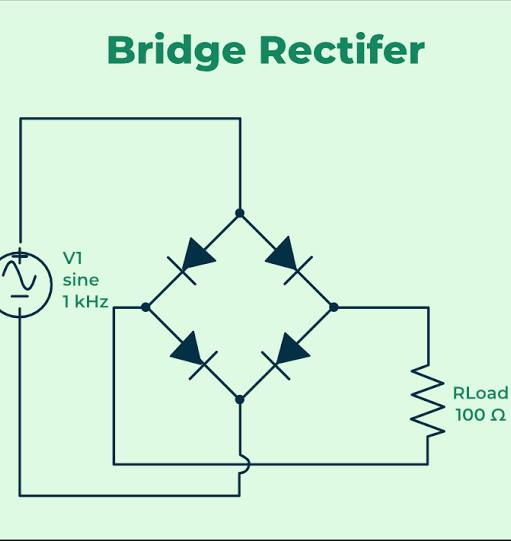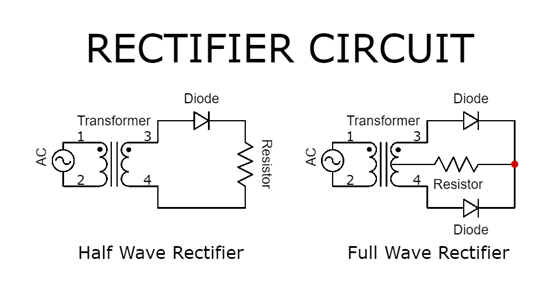A Rectifier is an essential electronic device that converts alternating current (AC) into direct current (DC). It is widely used in power supply systems where devices require steady, unidirectional voltage — such as in chargers, radios, TVs, computers, and DC motors.
Rectifiers play a key role in ensuring that electronic circuits receive the right type of current for their operation, as most electronic components cannot operate on AC directly.
Why Do We Need Rectifiers ?
The electrical power that comes from outlets is in the form of AC (Alternating Current). But most electronic devices like smartphones, laptops, and LED lights need DC (Direct Current) to operate properly.
That’s where rectifiers come in — they take the AC voltage from the mains and convert it to DC, often with the help of filters and voltage regulators to smooth out the output.
Types of Rectifiers
Rectifiers can be classified based on their circuit configuration and performance. The most common types are:
1. Half-Wave Rectifier
A half-wave rectifier uses only one half of the AC cycle (either positive or negative). The other half is blocked.
-
-
Key Components: One diode
-
Working: Only allows current during the positive half-cycle
-
Output: Pulsating DC
-
Efficiency: Low
-
Application: Low-power devices or signal demodulation
-
Limitation: A half-wave rectifier wastes half the input signal and has high ripple content.
2. Full-Wave Rectifier
A full-wave rectifier makes use of both halves of the AC cycle, improving efficiency and reducing ripple.
There are two types:
a. Center-Tap Full-Wave Rectifier
-
-
Uses a center-tap transformer and two diodes
-
Each diode conducts during one half of the AC cycle
-
More components needed, but more efficient than half-wave
-
b. Bridge Rectifier

-
-
Uses four diodes in a bridge configuration
-
No center-tap required
-
Most commonly used full-wave rectifier
-
Advantage: Higher efficiency, better DC output, and reduced ripple.
Working Principle of a Rectifier
The core of a rectifier circuit is the PN Junction Diode. A diode only allows current to flow in one direction — from anode to cathode — and blocks it in the reverse direction. Here's how it works in different cases:
In Half-Wave:
-
-
During the positive half-cycle: Diode conducts → Current flows
-
During the negative half-cycle: Diode blocks → No current flows
-
In Full-Wave (Bridge):
-
-
Both half-cycles are used
-
Diodes are arranged so that current always flows in the same direction through the load
-
Output of Rectifiers
The raw output from a rectifier is not pure DC — it is pulsating DC, which means it still has some ripples or variations. To smooth it out:
-
-
Capacitor filters are used to remove ripples
-
Voltage regulators stabilize the output voltage
-
Applications of Rectifiers
Rectifiers are used in a variety of everyday and industrial applications:
-
-
Battery chargers
-
Power supply circuits
-
Welding equipment
-
Radio signal demodulation
-
DC motor operation
-
Electroplating processes
-
Summary
A Rectifier is a device that converts AC to DC using one or more diodes. Depending on the application, half-wave, full-wave, or bridge rectifiers may be used. Though the raw output is pulsating DC, it can be filtered and regulated for stable performance in electronic devices.
In today’s electronic world, rectifiers are the backbone of power electronics, enabling a reliable supply of DC power from AC mains.
